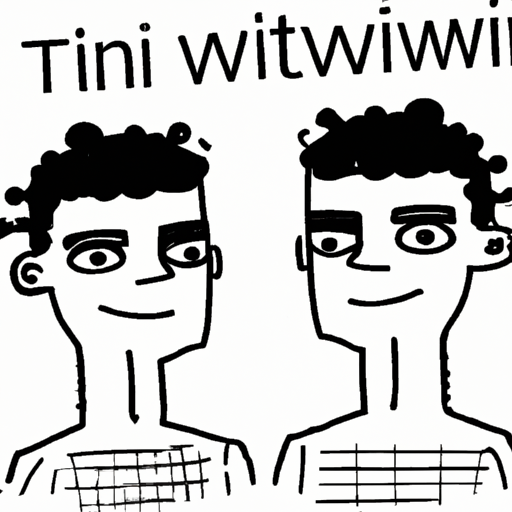Delving into the intricate world of digital simulations, our exploration today revolves around a fascinating concept – the chain of thought (COT). The core essence of artificial intelligence (AI) and machine learning (ML), COT is the critical cog that empowers these technologies to replicate human intelligence, giving birth to the most sophisticated digital twins. By fine-tuning this chain of thought, we open up a realm of possibilities in the accuracy and complexity of these digital replications.
Dipping our toes into the vast ocean of graph analytics, we'll harness the power of COT to create a new epoch in the field of digital simulations. By intertwining graph analytics with this principle, we can potentially create the most complex and precise simulations, setting a new benchmark for accuracy.
In a world where AI and ML are becoming synonymous with intelligence, the crux of our discussion sways towards exploring the accuracy of the chain-of-thought in these simulations. As we delve deeper, we'll examine how this intelligence in action can revolutionize our understanding of digital twins.
Join us as we journey into the fascinating world of fine-tuning chain-of-thought in AI and ML, exploring its impact on digital twins, and unveiling the intelligence within.
1. "Fine-Tuning the Chain-of-Thought: The Core of AI and ML in Digital Twins"
The intricacies of digital simulations are deeply rooted in the expression of cause and effect, more commonly referred to as the 'chain-of-thought' (COT). This concept is the backbone of artificial intelligence (AI) and machine learning (ML), and is particularly pertinent when considering digital twins.
Fine-tuning the COT is a paramount task in AI and ML. The meticulous calibration of this cognitive process is akin to threading a needle – one must be precise and unwavering. By adjusting and refining the COT, we imbue our AI with a semblance of intelligence. This fine-tuning process is not dissimilar to human learning; we learn from our mistakes, adjust our behaviour, and strive to make more informed decisions in the future. Similarly, AI learns from its previous iterations, constantly fine-tuning its chain-of-thought to increase accuracy and efficiency.
In the realm of digital twins, the importance of a well-tuned COT cannot be overstated. Digital twins are essentially virtual replicas of physical entities, and they rely heavily on AI and ML to function effectively. The chain-of-thought in a digital twin must closely mirror that
2. "Harnessing the Power of COT in Graph Analytics: A New Era for Digital Simulations"
In the realm of digital simulations, the concept of Chain of Thought (COT) has emerged as a powerful tool that can enhance the effectiveness of graph analytics. This potent combination has the potential to create the most intricate and precise simulations or digital twins ever seen. The principle of COT, which is essentially an expression of cause and effect, holds a significant role in this process.
When we talk about COT, we're referring to a logical sequence of events or ideas. In terms of Artificial Intelligence (AI) and Machine Learning (ML), COT can be seen as a programmed thought process that helps the system make decisions based on previously learned patterns. Here's where fine-tuning comes into play. By refining the algorithms responsible for these decisions, we can direct the COT to produce more accurate and useful results.
The application of COT in graph analytics is particularly exciting. Graph analytics is already a powerful tool for understanding complex systems and relationships. By incorporating COT, we add a new layer of intelligence to this process. The system isn't just identifying patterns—it's interpreting them, understanding the cause and effect relationships that govern them. This results
3. "Intelligence in Action: Exploring the Accuracy of Chain-of-Thought in AI and ML Simulations"
When we dive into the depths of artificial intelligence (AI) and machine learning (ML), we inevitably encounter a critical concept: the Chain-of-Thought (CoT). This concept is the lifeblood of digital simulations, and it provides the framework for understanding and predicting cause and effect relationships. When CoT is combined with graph analytics and llm's, it paves the way for creating advanced simulations or digital twins. But how accurate is this Chain-of-Thought? Let's delve into this fascinating topic.
Firstly, the CoT in AI and ML is not a whimsical concept. It is a carefully fine-tuned process that reflects the intricate workings of human cognition. Just as our minds connect different pieces of information to form a coherent thought, the CoT in AI and ML simulations utilizes complex algorithms to connect various data points and create a comprehensive understanding of a given situation.
However, as with any system, accuracy is paramount. The CoT is no exception. The accuracy of this process is directly influenced by the quality and quantity of the input data, as well as the sophistication of the algorithms used. Poor data or rudimentary algorithms can lead
In conclusion, the integration of chain-of-thought, or COT, in AI and ML applications, particularly in the creation of digital twins, represents a significant leap forward in the field of digital simulations. As we've discussed, fine-tuning this chain-of-thought is critical in ensuring the accuracy and complexity of these simulations, as it forms the core of AI and ML processes.
The power of COT is further amplified when combined with graph analytics, ushering in a new era for digital simulations. The intelligence inherent in AI and ML simulations is largely dependent on the accurate expression of COT, which is essentially a digital representation of our own cognitive processes.
The potential for digital twins, enhanced by an accurately modeled chain-of-thought and graph analytics, is immense. However, it's also crucial to remember that the effectiveness of these simulations is intrinsically tied to the accuracy and depth of the COT applied. Therefore, as we move forward, it's paramount that we continue to refine this chain-of-thought, further unlocking the potential of AI and ML in creating more complex, accurate, and ultimately, more useful digital simulations.
